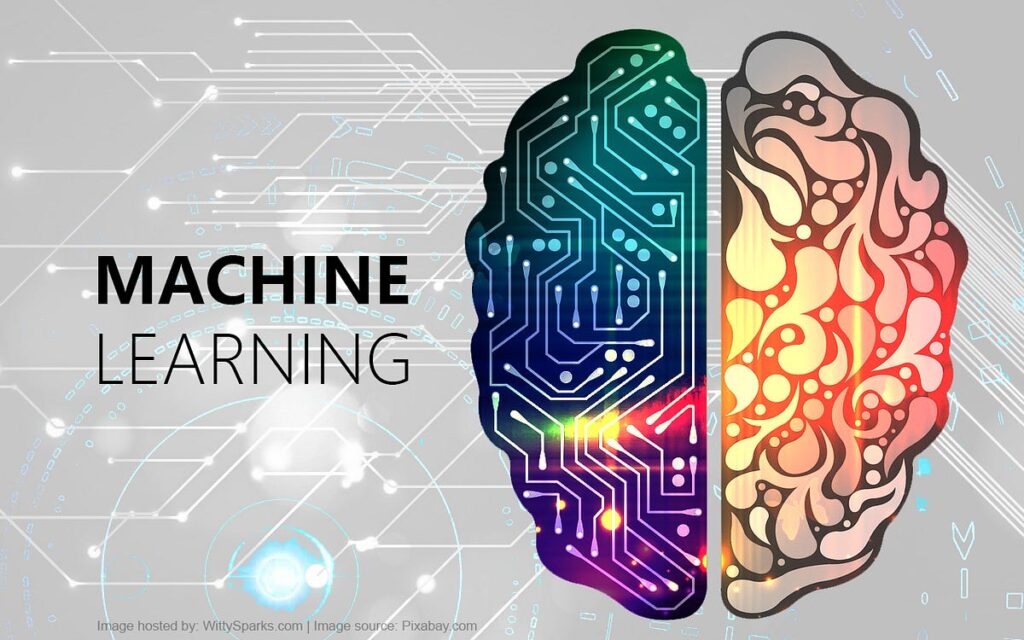Machine learning is a very exciting area of modern technology. It drives innovation across industries and shapes the way that we interact with data. This branch of artificial intelligence allows computers to improve their performance by learning from past experiences without having to be explicitly programmed. This type of technology has enabled advancements to be made in many areas, including healthcare, finance, and transportation. Understanding the basics of machine learning is important for beginners because it provides a foundation to understand how today’s intelligent systems operate. Understanding its fundamental principles will help you better adapt to or work with this rapidly evolving technology.
What Machine Learning Really Means
Machine learning is a process that teaches machines to make predictions or decisions based on data patterns. Developers create algorithms to process data and adapt with time, rather than hardcoding rules. The process begins with the feeding of large amounts of data into a computer model. This model then analyzes the data to identify patterns or relationships. A machine-learning system, for example, can eventually recognize the difference between dogs and cats in newly created images after being trained on thousands of their images. Machine learning is so powerful because it can adapt to new situations, unlike traditional programming methods.
Machine Learning: The Role of Data
Data is essential to any machine-learning system. Data quality, quantity, and relevance directly affect the accuracy and reliability. The system will learn patterns if the data is excellent. Poor data can lead to flawed results. It’s crucial for beginners to understand that the data must be cleaned and preprocessed prior to being fed into a modeling system. It is important to remove errors, complete missing values, and ensure consistency. The more data is prepared, the better the machine-learning model will be. Data is more than just an input. It is the foundation for machine learning success.
How Machine Learning Works
Algorithms are used to analyze data and make predictions. Often, the process involves training a machine on a dataset to make predictions or take decisions when presented with new data. During the training process, the model will adjust its internal parameters to minimize error in its predictions. With more experience, the model becomes more accurate. The process may vary depending on which learning method is used, but it’s the same principle: the machine uses the data to improve and adapt, without needing any specific instructions. Machine learning is so powerful and versatile because it can generalize past examples to different situations.
Machine Learning Types
Beginners should be aware of three types of machine-learning approaches. Supervised learning involves training the model using labeled datasets, which means that each example has a known input and output. Unsupervised learning occurs when the model uses unlabeled data to try and identify hidden patterns without having predefined answers. Reinforcement learning is the process of teaching an agent how to make decisions. When it makes wise choices, it is rewarded; when it makes bad choices, it is punished. Understanding the strengths and applications of each approach helps beginners select the best method for a specific problem.
Machine Learning Examples in Daily Life
Machine learning is ubiquitous in today’s society. Often, it operates in the background without our awareness. It is used by streaming platforms to suggest movies and music according to your viewing or listening habits. It is used by e-commerce websites to suggest products that you may want to purchase. Machine learning can help doctors diagnose illnesses more accurately in healthcare. It is used by financial institutions to detect fraud in real time. Your smartphone’s keyboard uses machine learning to anticipate your next text. These real-life examples show how machine learning is now a part of everyday life.
Limitations and Challenges of Machine Learning
Machine learning is a powerful tool, but it’s not without its challenges and limitations. Overfitting is a major problem in which a model overfits to the data it was trained on but does not perform well with new data. This phenomenon happens because the model has not generalized its patterns. A bias in the data can also lead to inaccurate or unfair predictions if it reflects societal prejudices. It is also difficult to acquire large quantities of high-quality, relevant data for machine learning. Training complex models is also resource-intensive and requires powerful computers as well as a lot of time. Beginners need to be aware of the challenges and have realistic expectations when it comes to machine learning.
Conclusion
Machine learning has transformed the way we communicate, work, and solve problems. Understanding its core concepts, such as how it functions, the importance and types of data, and the common algorithms, provides the foundation for beginners to explore this fascinating area. Despite the challenges and ethical issues, responsible development and critical thought can resolve them all. The demand for people familiar with the basics of machine learning will keep growing as the field develops. It is important to learn it now so that you are prepared for the future, when intelligent systems will be a part of our lives.
FAQs
1. What does machine learning mean in simple terms?
Machine learning is a form of artificial intelligence in which computers improve over time by learning from data, without having to be explicitly programmed.
2. Is programming required to begin machine learning?
Beginners can learn concepts without coding and then move on to practical applications.
3. What is the main machine learning type?
There are three types of training: supervised learning (also called supervised learning), unsupervised learning (also known as reinforcement learning), and reinforcement learning. Each type has a different approach to the model.
4. Are machine learning and AI the same thing?
“AI” is a broad term that includes a wide range of intelligent behaviors. Machine learning, on the other hand, is a subset, which focuses specifically on systems that learn and adapt based on data.
5. Is machine learning accessible to everyone?
Anyone with some interest and commitment can learn machine learning. It takes curiosity, problem-solving skills, and the willingness to experiment and practice with data and models.




